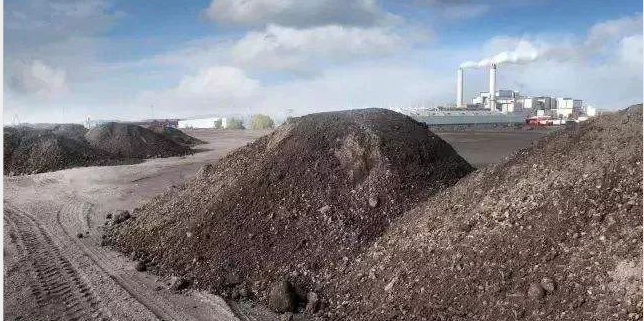In order to continuously increase the quantity of municipal solid waste, incineration technology has been widely used in domestic waste treatment. China’s relevant documents clearly stipulate that the incineration slag is treated with general solid waste, and the comprehensive utilization standard of such waste is clarified. Various resource utilization technologies are increasingly mature, which brings considerable economic benefits.
1. Present situation of resource utilization of incineration slag
As early as several decades ago, foreign developed countries began to study the utilization of domestic waste incineration resources, mainly from the aspects of environmental impact and resource utilization, collected and treated the fly ash and slag produced in the incineration plant, so as to make them into secondary resources for use. Slag is the product of MSW incineration, accounting for 20% – 30% of the total weight of MSW, and fly ash accounts for about 0.5%. According to the survey, in 2019, 5932t domestic waste will be incinerated, which will produce 5.2-7.8 million tons of slag, and the amount of fly ash will be about 13 tons, which will virtually increase the difficulty of slag treatment, and the land resources of landfills will be increasingly tense. In order to save land for landfill and reduce treatment cost, it can be realized by reusing slag.
In developed countries, the slag is mainly treated by sanitary landfill and resource utilization. The utilization rate of slag in EU countries ranks first, more than 50% of the total. China’s relevant regulations point out that the slag can be directly put into the sanitary landfill site for treatment, but because the fly ash contains dioxin and other harmful substances, it needs special treatment to reduce the content of harmful substances to the allowable range before sanitary landfill, otherwise, it will be treated as hazardous waste. From the physical and chemical properties, slag has aggregate characteristics, low content of heavy metal and dissolved salt, no radioactive hazard, less interference to the environment in resource utilization, and relatively less organic matter content in slag, high strength, so it can be made into building materials and put into civil engineering. At present, slag resources are mainly used to make aggregate and covering materials, which are applied to road engineering and landfill.
2. Resource utilization technology of municipal solid waste incineration slag
2.1 slag pretreatment and metal recovery
In order to promote the optimal utilization of slag resources, it is necessary to carry out pretreatment. The particles with diameter less than 100 mm are selected into the subsequent links by using the screening device, and the metal with the volume of more than 100 mm is crushed. The incomplete burning garbage is manually picked out and sent back to the incinerator for re incineration. The whole process does not need external drainage, which can achieve zero discharge of sewage. According to the investigation, there are some scrap metals in the slag, such as iron, copper, aluminum, etc. generally, the recoverable metal content is 5% – 8%, which has certain recycling value and can be reused. The recovery rate of iron, copper and aluminum in slag is 14.8%, 52.7% and 73.1%, respectively. It can be seen that the recovery rate of valuable metals in slag is relatively high, and the recovery treatment has certain feasibility.
2.2 making environmental protection bricks
After pretreatment, the moisture content of the slag is about 2%, the density is about 1250kg / m3, and the water absorption rate is about 9%. After five times of soaking and drying with saturated sodium acid solution, the slag mass loss is about 4.31%, and the soundness meets the relevant requirements of non fired brick. At present, in the United States and the Netherlands and other places, the slag from domestic waste incineration has been made into building materials and applied to engineering construction. The more frequently used manufacturing method is to mix the slag and aggregate in a specific proportion, and then mix with cement and water to form concrete bricks. The U.S.A. has carried out an experimental evaluation on the environmental impact of such unburned bricks. Two artificial reefs have been built on the seabed by using the unburned bricks, and the environmental changes around them have been followed up for six years. The results show that there are no toxic components in the unburned bricks, which can meet the requirements of concrete replacing aggregate. Rothel et al. Used these non fired bricks to build the shipyard and monitored the air quality inside the building for two and a half years. The results showed that the particulate pc-dd, TSP and volatile organic matter in the air of the building did not change significantly. Therefore, the pollutants in the slag were locked in the cement bricks. On the whole, it is feasible to make environmental protection brick with slag in engineering practice and environmental protection.
2.3 making subgrade filling material
In terms of physicochemical properties and engineering properties, slag is similar to lightweight natural aggregate. After treatment, the slag can be paved with asphalt, cement and other materials. According to the leakage of metal elements in such mixture, it can be seen that the release of cadmium, lead and zinc is relatively low. Through the evaluation of environmental, human health, life cycle and other factors, it is found that there is a close relationship between management technology and risk. If the management technology is scientific and reasonable, it can effectively reduce the probability of risk occurrence and avoid adverse interference to the environment. In the United States, Europe and other developed countries, slag has been successfully applied to the foundation filling of parking lots and roads, and it is also more common in China. For example, Shanghai Nursery Road is a typical successful case. According to the monitoring of road surface deflection, road condition, base strength and other indicators, it is found that the application of slag in base materials is very feasible, and the effect is still good after long-term application.



